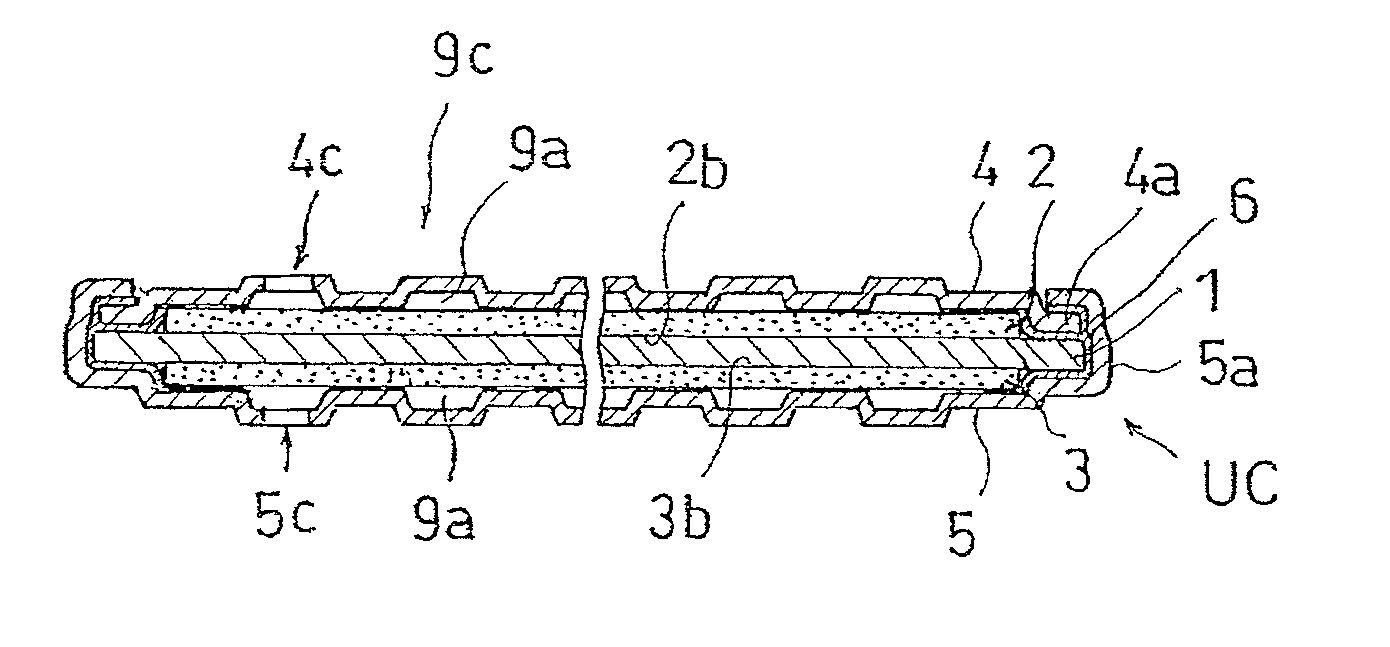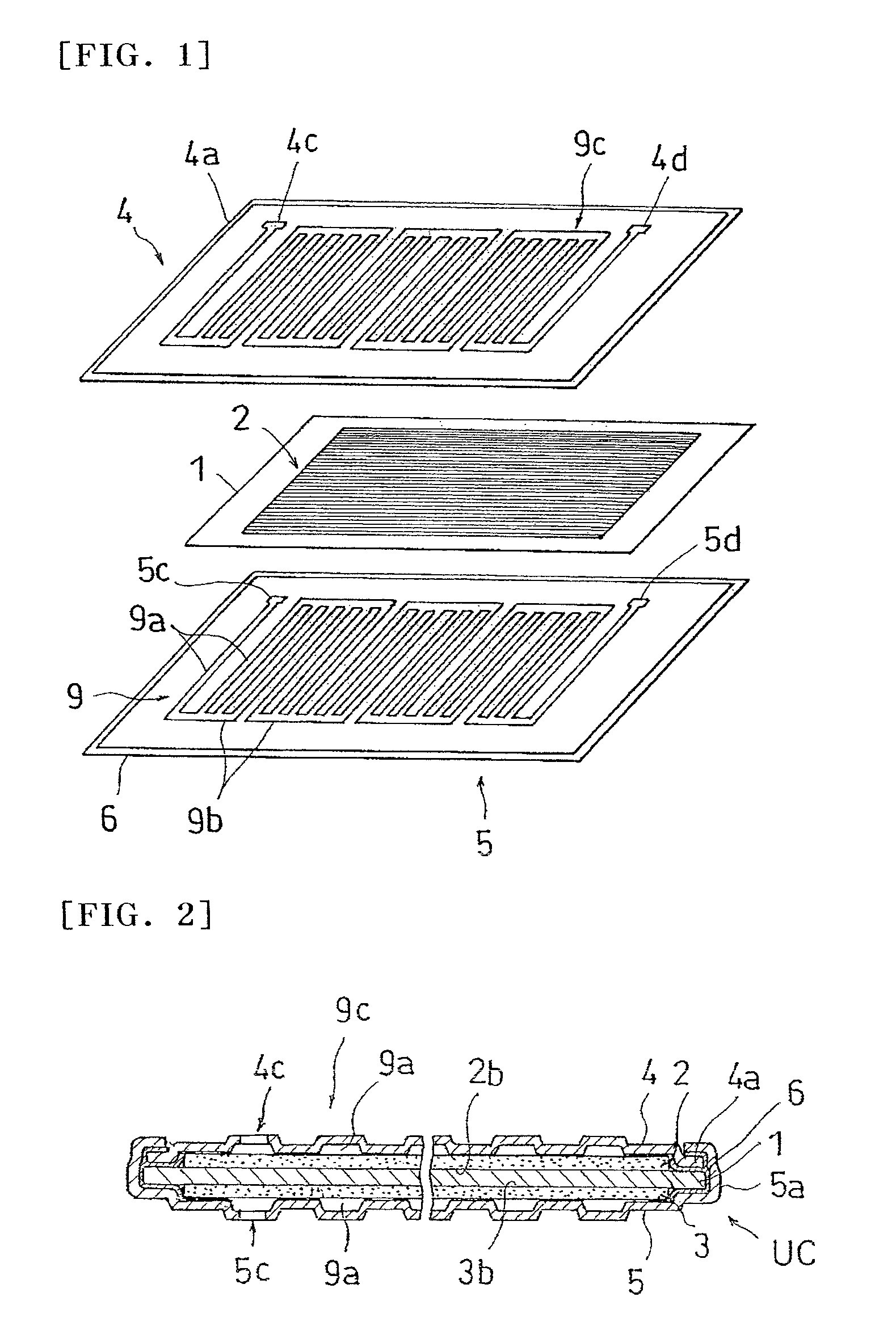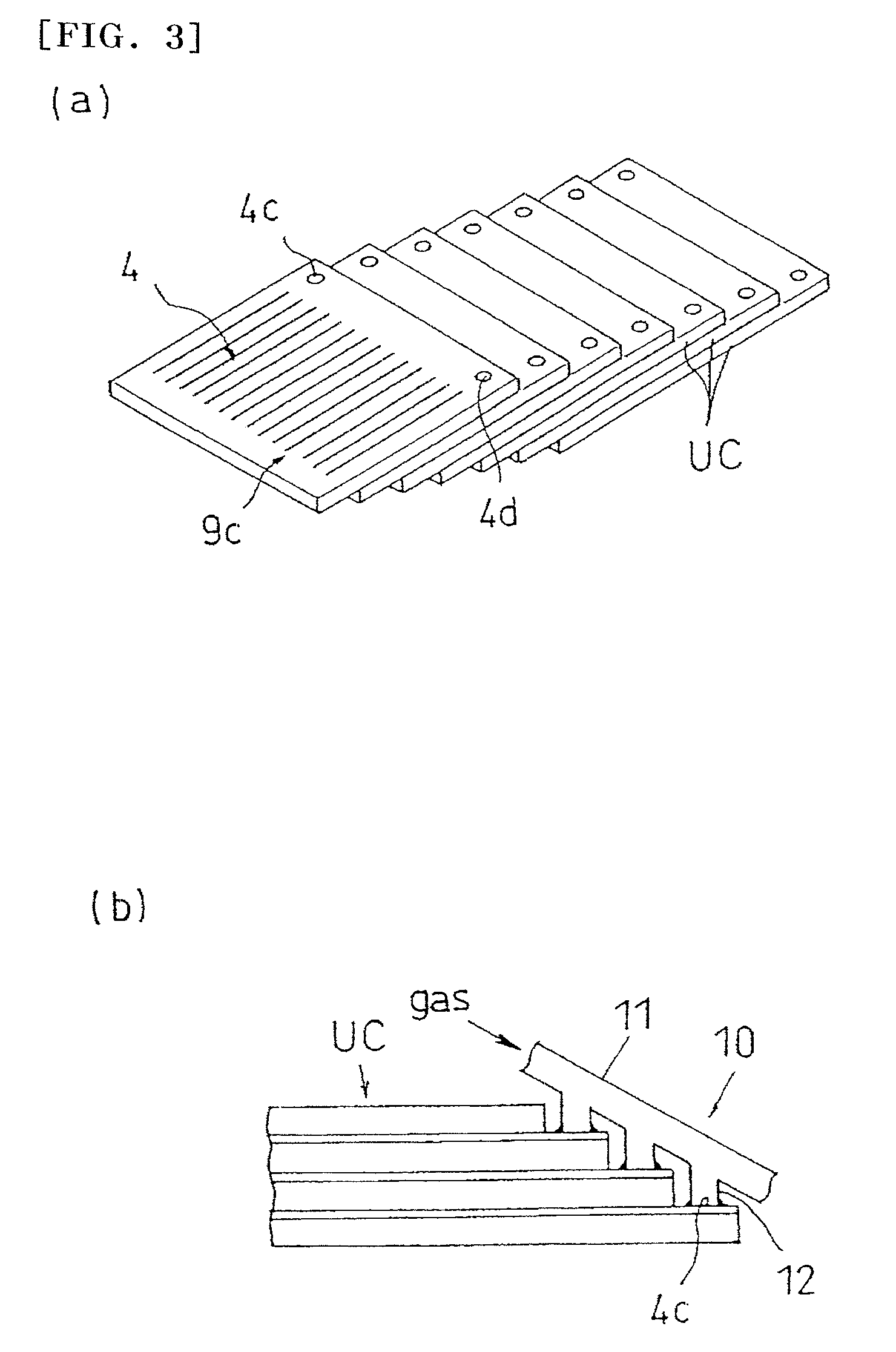Fuel cell
a fuel cell and polymer technology, applied in the field of polymer-type fuel cells, can solve the problems of deterioration of maintenance, difficult supply, and difficulty in realizing the thinner, small and lighter type of electric supply for mobile instruments, and achieve the effects of preventing short circuit between both of them, increasing thickness, and reliable sealing
- Summary
- Abstract
- Description
- Claims
- Application Information
AI Technical Summary
Benefits of technology
Problems solved by technology
Method used
Image
Examples
example 1
[0085]Twenty one grooves (width 0.8 mm, depth 0.2 mm, interval 1.6 mm) were provided on SUS (50 mm×26 mm×0.08 mm thickness) having corrosion resistance by press processing. An insulating sheet (50 mm×26 mm×2 mm width, thickness 80 μm) was then laminated to SUS. A membrane electrode assembly (49.3 mm×25.3 mm) was manufactured as described below. As a platinum catalyst, a carbon catalyst carrying 20% platinum (EC-20-PTC) manufactured by US Electrochem was used. This platinum catalyst, carbon black (Akzo; Ketchen Black EC) and polyvinylidene fluoride (Kiner) were mixed at a ratio of 75% by weight, 15% by weight, and 10% by weight, dimethylformamide was added to the mixture of a platinum catalyst, carbon black and polyvinylidene fluoride at such a ratio that a 2.5 weight % polyvinylidene fluoride solution was obtained, and the materials were dissolved and mixed in a mortar to prepare a catalyst paste. A carbon paper (TGP-H-90 manufactured by Toray Industries, Inc., thickness 370 μm) was...
example 2
[0088]According to the same manner as that of Example 1 except that SUS (50 mm×26 mm×0.3 mm thickness) having a different thickness was used, and a groove (width 0.8 mm, depth 0.2 mm, interval 1.6 mm) was formed by changing a processing method to etching with an aqueous ferric chloride solution, a thin miniature micro-fuel cell shown in FIG. 4 was obtained. In FIG. 4, a thickness of SUS at a caulking part was also reduced by etching (thickness 0.1 mm).
[0089]Cell properties of this micro-fuel cell were assessed as in Example 1. The resulting maximum output density was 450 mW / cm2 per electrode area (FIG. 13). Six fuel cells were laminated to obtain series connection, and output of 20 W as a fuel cell was obtained. The feature of the present invention is in that a cell is thin as a thickness of 1.4 mm, and a high output as 450 mW / cm2 per unit electrode area is obtained.
reference example 1
[0090]According to the same manner as that of Example 2 except that a thickness of a solid polymer electrolyte was 25 μm (½ of that of Example 2), a fuel cell was prepared. At that time, the presence or the absence of gas mixing in a cell and the presence or the absence of gas leakage to the outside of a cell were investigated in the case where a sealing member (material: fluorine resin, thickness 100 μm) having a shape shown in FIG. 10(b) was used, or not used.
[0091]As a result, when a sealing member was used, gas mixing and gas leakage did not occur at a ratio of 10 / 10, on contrast, when a sealing member was not used, gas mixing occurred at a ratio of 4 / 10, and gas leakage occurred at a ratio of 3 / 10.
PUM
| Property | Measurement | Unit |
|---|---|---|
| thickness | aaaaa | aaaaa |
| thickness | aaaaa | aaaaa |
| depth | aaaaa | aaaaa |
Abstract
Description
Claims
Application Information
 Login to View More
Login to View More - R&D
- Intellectual Property
- Life Sciences
- Materials
- Tech Scout
- Unparalleled Data Quality
- Higher Quality Content
- 60% Fewer Hallucinations
Browse by: Latest US Patents, China's latest patents, Technical Efficacy Thesaurus, Application Domain, Technology Topic, Popular Technical Reports.
© 2025 PatSnap. All rights reserved.Legal|Privacy policy|Modern Slavery Act Transparency Statement|Sitemap|About US| Contact US: help@patsnap.com



